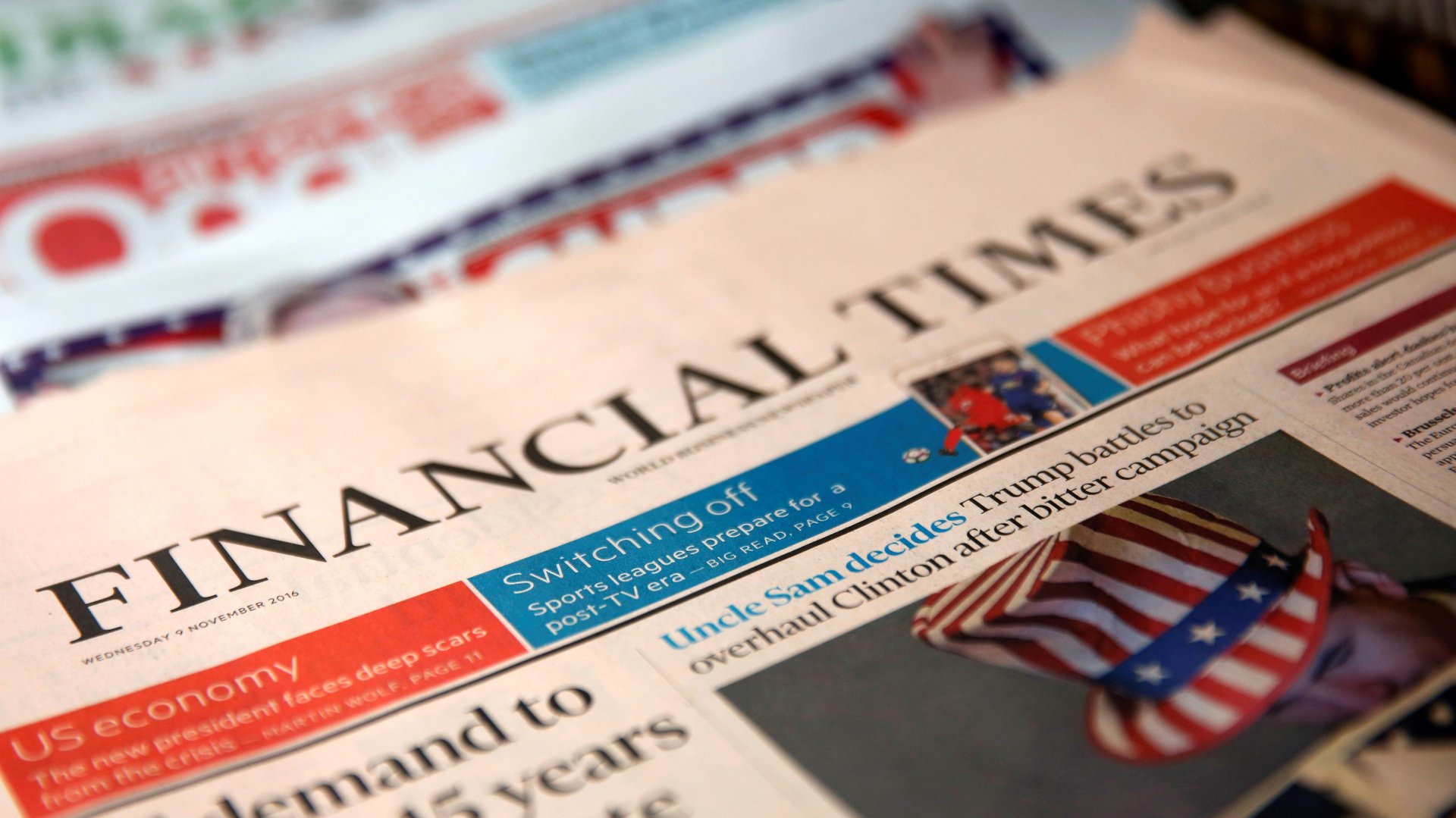The FT, eager for female readers, plans to get them with an experiment called Peter’s Choice
This item has been corrected.


This item has been corrected.
Although surely female-friendly, in that pretty shade of pink, the Financial Times, just like the financial industry at large, has a women problem. According to an email sent this past weekend by FT editor Lionel Barber to the editorial team, even fewer women read the UK-based publication than work in the sector it covers.
Only 21% of the paper’s subscribers are women (this is the figure shared in the email, though a spokesperson for the FT said the figure is 28%, and it’s about digital readers, not subscribers), and only 40% of them are what the paper would consider engaged readers, versus 60% of the FT’s male subscribers.
“The FT is determined to attract more women,” the memo declares. Through a new editorial tool, the email explains, the newsroom will have a deeper understanding of how women interact with stories, and which ones they are most interested in, with the objective of helping “FT reporters and editors become more aware of women as an audience when writing, editing, and making promotional choices.”
So far, so good. Finding untapped audience potential is the name of the game in the media industry; there is hardly any major publication that’s not running experiments to expand readership.
But then there’s this nugget: “To be clear: I am not suggesting we write more ‘women’s content,'” Barber writes. “In fact, our reader feedback confirms that women do not want to be treated differently from male readers.”
The FT’s standards, the email assures, will never change. “The news is the news and will remain the news.” In other words, forget about columns on grocery budgeting, or reviews of the most appropriate skirt length for boardroom meetings—the paper isn’t going to compromise its standards to cater to the ladies.
Barber’s air quotes around “women’s content” suggest he’s appropriately skeptical of the term and its sexist implications. But he then finds it necessary to point out to his staff that news doesn’t have to cease being news in order for women to read it, and that female readers don’t want to be treated any differently than male readers. It betrays that he thinks his newsroom, or at least part of it, holds a rather outdated view of what women want. (The FT staff is 50% female, though there are only five women amongst the 31 top FT commentators and journalists featured on the paper’s website as being available for speaking engagements and interviews, while seven of the 23 most prominent columnists are women.)
The paper will begin identifying one story a day that is effectively engaging women, so that it can be promoted on the home page in the hopes of attracting a wider female audience. That story will be chosen by the news editor, Peter Spiegel, who will be leading the initiative as part of his responsibilities, and whom the experiment will be named after. It will be called—behold the ultimate women-bait?—Peter’s Choice.
The FT said in a statement that “this company-wide effort to engage more women is spearheaded by a diverse group of leaders representing all our departments.” The publication also noted that the women’s initiative expands beyond the newsroom’s analytics experiment, including other initiatives led by men and women across several departments. More initiatives are in the works to target other demographics, though they have not yet been communicated to the newsroom.
Correction: The memo was sent to the editorial staff, not to the whole FT staff, as previously stated.